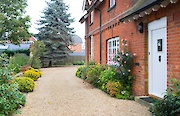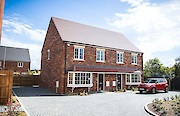


Head of Content

Mortgage Advisor & Director

Scotland is a popular location to invest in property, with attractive rental yields available in cities such as Glasgow and Dundee, but how do buy-to-let mortgages work there, how do you get one, and what rates should you expect? Find our inour guide to buy-to-let mortgages in Scotland.
Can you get a buy-to-let mortgage in Scotland?
Yes. Buy-to-let mortgages are readily available in Scotland but there are fewer lenders for this type of finance than there are in England and Wales.
Buy-to-let mortgages north of the border work largely in the same way as they do in the rest of the UK, but there are key differences and specific rules to be aware of. They include:
- Postcode restrictions: It is tricky to get approved for a mortgage in the Scottish Highlands or on the surrounding islands as these are considered higher risk areas.
- Right to Rent checks: These checks must be carried out in England to ensure tenants are legally permitted to rent property. They are not required in Scotland.
- Deposit protection: You must register with a Scottish scheme to protect tenancy deposits within 30 days of a new rental agreement. The local schemes are Letting Protection Service Scotland, Safe Deposits Scotland and mydeposits Scotland.
- Taxation: For a buy-to-let property in Scotland, you will pay Land and Buildings Transaction Tax (LBTT) to Revenue Scotland, rather than stamp duty. You can find more information about bands, thresholds and rates later on in this article.
Eligibility criteria
The main difference between buy-to-let mortgages in Scotland in the rest of the UK in terms of eligibility criteria is the geographic restrictions some lenders have. Speak to a mortgage broker if the property you are buying is in the Highlands or away from the mainland.
The other requirements are generally no different, and they are as follows:
- Deposit requirements: You will need at least 20-25% of the property’s value to put down as a deposit to get approved for a buy-to-let mortgage in Scotland.
- Landlord experience: It is not essential to have prior landlord experience but you will have significantly more lenders to choose from if this isn’t your first buy-to-let property. Those with no landlord experience usually need to have personal income of at least £25,000 per year as well as a satisfactory rental income forecast.
- Credit history: Clean credit means a wider choice of rates and deals to choose from, but it is possible to get approved for a buy-to-let in Scotland with some forms of adverse credit. The most severe types, such as bankruptcy, can be deal-breakers.
- Age limits: Certain lenders have a minimum age limit of 18-25 years for buy-to-let landlords. At the other end of the scale, your options will be more limited if the mortgage term runs into your 75th birthday, but some lenders are flexible on this.
How much you could borrow
Maximum borrowing for buy-to-let mortgages in Scotland is calculated in exactly the same way as it is in England. Lenders will consider offering you the amount you need if the rental payments will match your monthly mortgage payments by 125-145%.
You can work out what the repayment on your mortgage will look like by entering the amount you need to borrow into our calculator below. We recommend setting the repayment type to interest-only as most buy-to-let mortgages are offered on this basis.
If your rental income is at least 125% of the repayment amount calculated, you are likely to pass the affordability assessment for a buy-to-let mortgage.
Interest rates available
Buy-to-let mortgage rates in Scotland tend to be higher than residential mortgage rates, anywhere between 0.5% and a full percentage point above them. Your chances of securing a lower rate will improve if you can put down extra deposit to reduce the loan-to-value (LTV) ratio, have no severe bad credit, and use a mortgage broker to access the whole market.
You can compare buy-to-let mortgages rates for free here. Teito lets you browse deals from across the market and choose one in real-time. As part of the service, you can take advantage of a free, no-obligation chat with a broker who specialises in the Scottish buy-to-let market.
Choose your preferred option below to get started:

Compare Buy-to-let mortgage rates in Scotland
Best areas to get a buy-to-let mortgage in Scotland
The best areas to invest in rental property in Scotland are largely determined by the rental yields on offer. According to 2024 data from Zoopla, these are most favourable in big cities including Aberdeen (8.03%), Dundee (7.96%) and Glasgow (7.95%).
A good rental yield is anywhere between 6% and 8%. Other factors to take on board when choosing a location are the local house prices and average monthly rent.
The table below highlights some of the best postcodes in Scotland for landlords to get a buy-to-let mortgage in, based on these variables.
|
Postcode |
Average Property Price |
Average Rental Income (Monthly) |
Average Gross Rental Yield |
|
G52 |
£108,633 |
£886 |
9.80% |
|
AB24 |
£95,658 |
£95,658 |
8.90% |
|
G4 |
£158,937 |
£158,937 |
8.70% |
|
DD4 |
£139,519 |
£139,519 |
8.50% |
|
AB11 |
£95,839 |
£95,839 |
8.40% |
|
G5 |
£164,998 |
£164,998 |
8.30% |
|
G2 |
£167,000 |
£167,000 |
8.20% |
|
G1 |
£168,652 |
£168,652 |
7.90% |
|
G31 |
£145,950 |
£145,950 |
7.80% |
|
G11 |
£184,275 |
£184,275 |
7.60% |
Source: These figures were sourced from PropertyData in 2024
Land and Buildings Transaction Tax
Land and Buildings Transaction Tax rates (LBTT) is the Scottish version of stamp duty land tax and it is payable on any buy-to-let property you purchase. For investment properties and second homes, an additional dwellings supplement (ADS) must also be paid.
See our guide to stamp duty to find out how much your LBTT bill will be
Let-to-buy mortgage deals in Scotland
If you own a residential home in Scotland, want to move house but keep your current property to convert into a buy-to-let, a let-to-buy agreement could be the answer.
With let-to-buy, you can remortgage your home onto a buy-to-let agreement, and as part of the deal, release equity to serve as the deposit for the new property you are moving to.
Some mortgage lenders in Scotland offer let-to-buy as a package deal, providing both the remortgage and the purchase of the new property, but there are times when it may be beneficial to use two different lenders. As there are a lot of moving parts involved, it is advisable to speak to a broker who specialises in let-to-buy before you proceed.
You can read more in our guide to let-to-buy mortgages.
Why choose Teito for your buy-to-let mortgage needs?
You can browse buy-to-let mortgage rates and deals for free on Teito and access support from a broker who specialises in the Scottish market, if you need some advice.
Here are just some of the reasons why our customers choose us:
- You can access buy-to-let mortgage rates in seconds
- Exclusive deals are available
- We are 5-star rated on leading review websites
- You can secure an agreement in principle in minutes
Ready to browse rates and deals and take advantage of a free, no-obligation chat with a broker who specialises in Scottish buy-to-let mortgages? Get started here.
FAQs
Using a broker is always recommended if you are applying for a buy-to-let mortgage as they can help you save time and money. You don’t, however, necessarily need to use one based in Scotland as all independent mortgage brokers are well placed to help you secure the mortgage you need from anywhere in the UK, using phone, web and other channels.
That said, if your preference is a mortgage broker who is based in Scotland, we can arrange for one of our advisors who is based there to handle your application. They may also offer you a face-to-face consultation if that is what is needed, or is what you would prefer.
Choosing an Adviser
Selecting a qualified and experienced mortgage adviser is of great importance. To choose a suitable adviser, evaluate their qualifications, experience, and reputation, and ensure they are regulated by the Financial Conduct Authority (FCA).
Read reviews from previous clients and make sure they provide a clear explanation of the products and services they offer, as well as the fees and charges associated with them.















































































































































